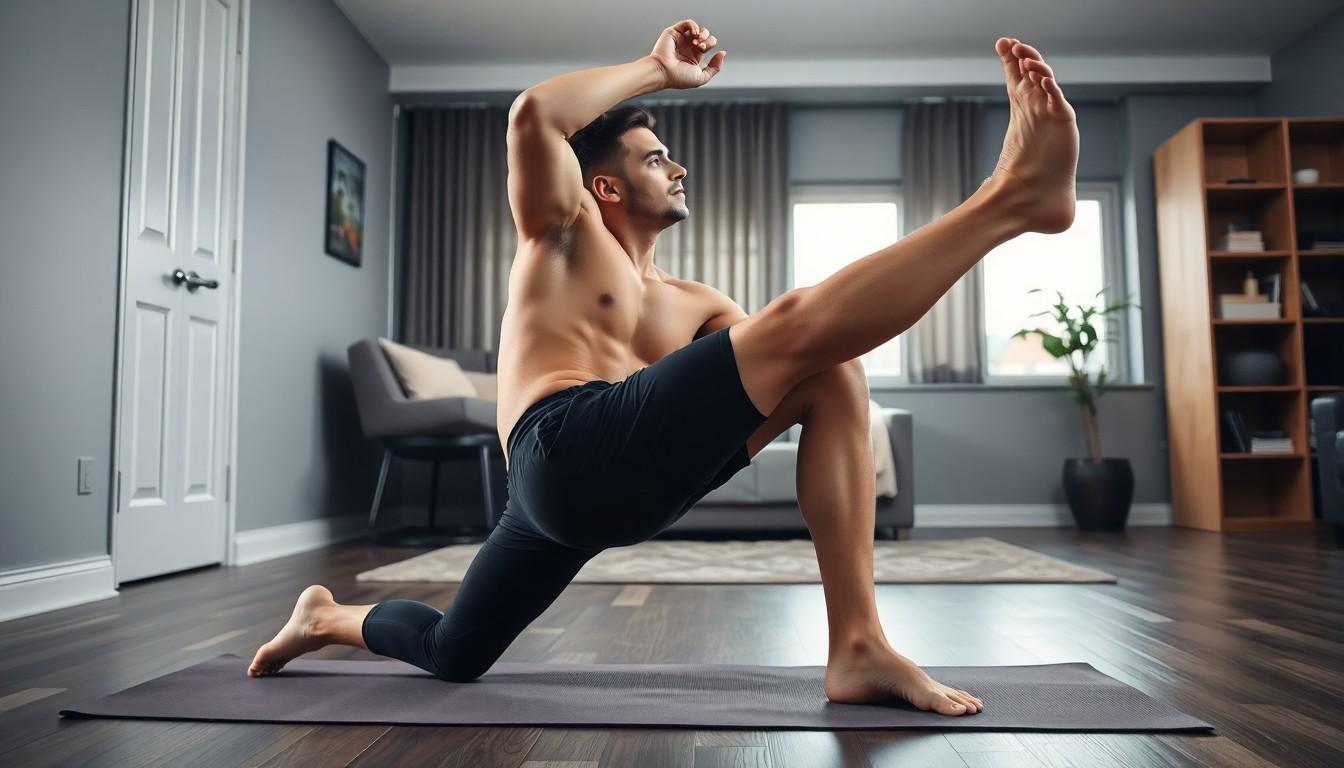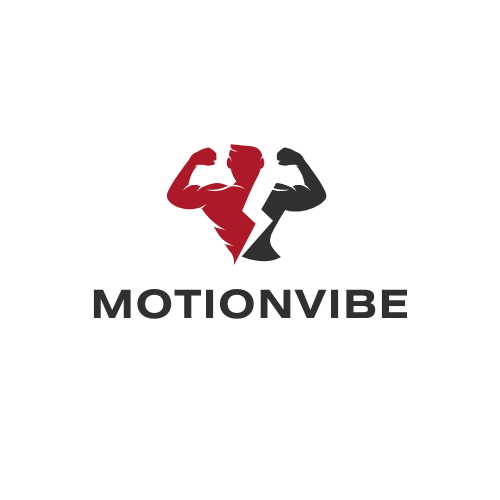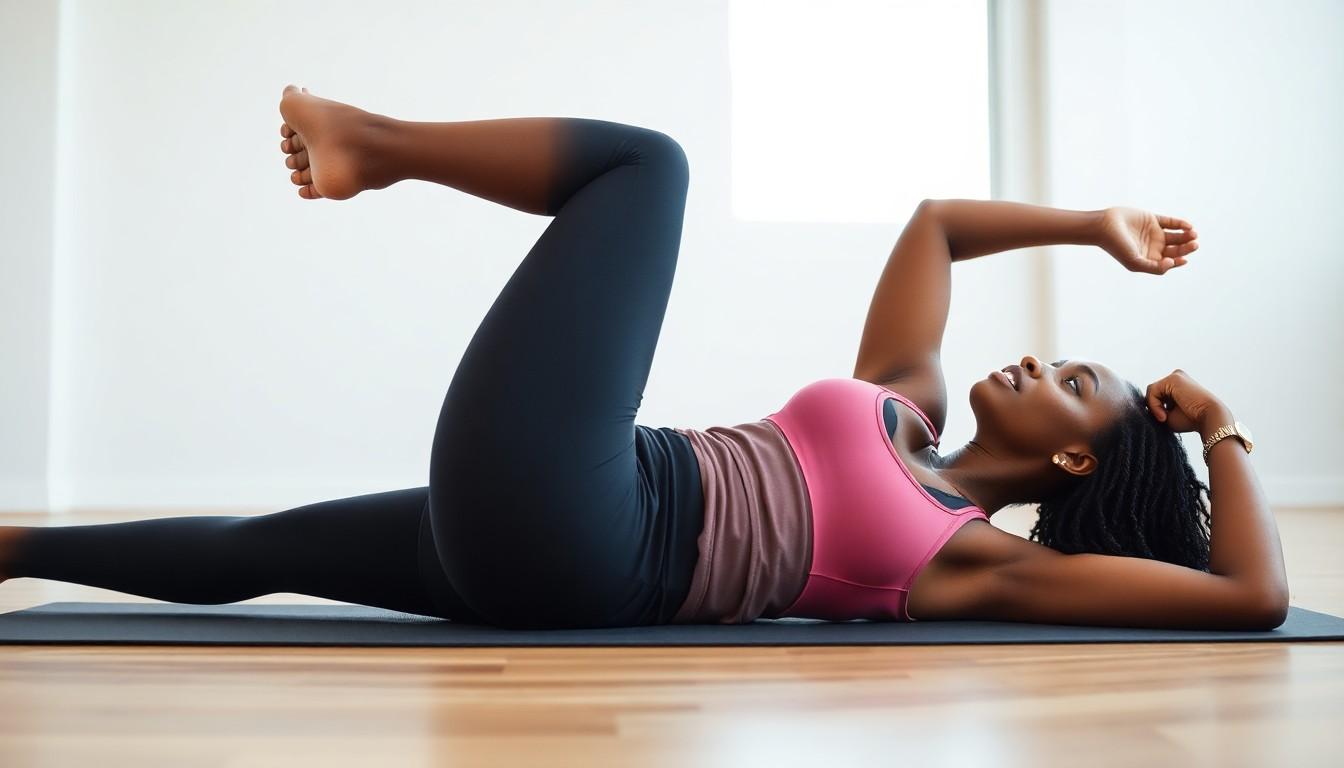Looking to sculpt those glutes and strengthen your core? Hip raises might just be the secret weapon you need. This simple yet effective exercise not only targets your posterior but also helps improve overall stability and mobility. Plus, who doesn’t want to strut around with confidence knowing their backside is on point?
Overview Of Hip Raises Exercise
Hip raises serve as an excellent exercise for enhancing glute strength and overall core stability. This movement is accessible, making it easy for individuals at various fitness levels to integrate into their routines.
Benefits Of Hip Raises
Improved glute strength aligns with better performance in daily activities and athletic endeavors. Enhanced core stability supports proper posture and reduces the risk of injury, especially in the lower back. Increased flexibility of hip flexors results from regular practice, promoting a greater range of motion. Moreover, this exercise engages multiple muscle groups, contributing to a well-rounded workout. Weight management benefits from elevated metabolic activity during and after the exercise.
Muscles Targeted By Hip Raises
Primary muscles activated during hip raises include the gluteus maximus, which plays a crucial role in hip extension and stabilization. Activation of the hamstrings occurs, aiding in knee flexion while supporting the hips. The core muscles engage, including the rectus abdominis and obliques, providing essential support during the movement. Additionally, the quadriceps and lower back muscles contribute, ensuring overall body stability. Utilizing this exercise leads to balanced development of the posterior chain, essential for athletic performance and functional movements.
How To Perform Hip Raises

Hip raises are straightforward yet effective. Proper technique maximizes benefits and minimizes injury risks.
Step-By-Step Guide
- Start lying on your back with knees bent and feet flat on the ground, hip-width apart.
- Place arms at your sides, palms facing down for stability.
- Engage the core by tightening stomach muscles.
- Lift hips towards the ceiling, squeezing the glutes tightly at the top.
- Hold the position briefly, maintaining a straight line from shoulders to knees.
- Lower hips back to the starting position slowly, ensuring control.
- Repeat for 10-15 repetitions.
Common Mistakes To Avoid
Improper foot positioning can undermine effectiveness. Keep feet hip-width apart for optimal hip engagement. Not engaging the core leads to unnecessary strain on the lower back. Focus on tightening the abdominal muscles throughout the exercise. Inadequate squeezing at the top prevents full glute activation. Ensure glutes tighten during the lift for maximum impact. Avoid arching the lower back, which can create discomfort. Maintain a neutral spine instead. Lastly, rushing through repetitions diminishes the benefits. Perform the exercise at a steady pace to enhance control and effectiveness.
Variations Of Hip Raises Exercise
Hip raises exercise offers multiple variations that enhance muscle engagement and challenge stability. Each variation targets muscles differently, contributing to a well-rounded workout routine.
Single-Leg Hip Raises
Single-leg hip raises increase difficulty and focus on individual leg strength. While lying on the back, one leg stays elevated, engaging the glutes and hamstrings more intensely. This variation boosts balance and stability, helping to correct muscular imbalances between sides. Proper execution involves keeping the raised leg in line with the hips and controlling the movement during both the ascent and descent. Incorporating this variation not only stimulates greater muscle activation but also improves overall core engagement.
Weighted Hip Raises
Weighted hip raises add resistance, further challenging the muscles involved in the exercise. By placing a weight plate or dumbbell across the hips, individuals maximize glute and core activation. Controlled lifting and lowering with added weight develop strength and power, essential for various athletic movements. It’s crucial to maintain proper form, ensuring the hips rise high enough to fully engage the glutes while avoiding excessive arching of the back. This variation supports increased muscle growth and contributes to improved overall fitness levels.
Incorporating Hip Raises Into Your Routine
Incorporating hip raises into a fitness routine enhances glute strength and core stability. These exercises fit seamlessly into both beginner and advanced workout plans.
Recommended Workout Plans
Start with simple exercises for beginners. They can include two to three sets of 10 to 15 repetitions of standard hip raises. For intermediate or advanced levels, a combination of variations like weighted hip raises and single-leg hip raises works well. This approach encourages greater muscle activation. Alternatively, pairing hip raises with other glute-targeting exercises, such as squats or lunges, optimizes overall effectiveness.
Frequency And Duration Suggestions
Aim for performing hip raises two to three times per week for optimal results. Each session should ideally include a warm-up, with approximately 30 minutes dedicated to the exercises. Since hip raises are low-impact, recovery time can be shorter. Nevertheless, it’s crucial to listen to the body, adjusting frequency based on individual comfort and fatigue levels. Balancing these workouts with other fitness activities promotes continued progress.
Conclusion
Hip raises are a versatile exercise that can transform any fitness routine. By targeting key muscle groups they not only enhance strength but also improve overall stability and mobility. Their adaptability makes them suitable for all fitness levels allowing individuals to progress at their own pace.
Incorporating hip raises regularly can lead to noticeable improvements in glute strength and core stability. With various modifications available individuals can keep their workouts fresh and challenging. Embracing this exercise not only boosts physical performance but also fosters confidence in one’s body.

